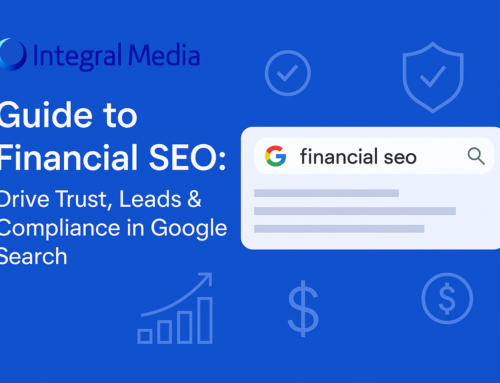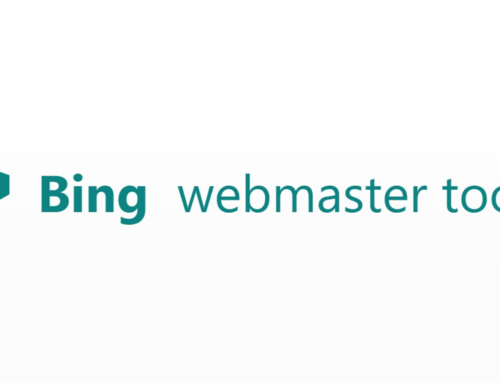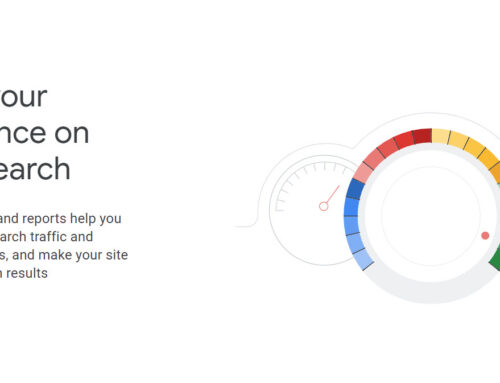By now, many business owners and marketing professionals would be – or should be – familiar with the basics of SEO and why it’s so important in today’s fast-paced and digitally-driven world.
But just to recap: SEO helps your website become more ‘visible’ to users searching online for your products and services. ‘Visible’ meaning on page 1 on Google search page results (including on Google Maps listings, and even image results).
The difference between traditional content writing and SEO content writing is that SEO content is made for search engines to understand what your website and pages are about. This helps connect your target customers to your website online. Even though SEO content is primarily made for search engines, the best and most high performing SEO content combines the best of serving both the search engine and providing the end-user with useful, relevant and informative content.
Without effective SEO strategies in place, your website would otherwise be buried under hundreds, thousands, if not millions of other similar websites and businesses in your industry unable to be seen by your target customers.
So, what is the best way to optimise your website for SEO?
The answer: through good quality, user-focused, SEO optimised content.
This usually comes in two formats – landing pages and blog articles.
The reason why business owners and marketers don’t implement SEO or invest in SEO enough is because SEO is notorious for being
- Time-consuming
- Easy to get wrong
In other words, money down the drain if not done properly.
But when done right?
Your business will be the first choice of any potential target customer. You’ll not only be ‘seen’ or ‘visible’ online, but you’ll have trust and authority as a top ranking business positioned on the first page of Google – the most widely used search engine in the world.
Our SEO clients that we’ve successfully ranked page 1 for have doubled and even tripled their income within a few months of using our SEO strategies – and have maintained their stable and strong position since.
At Integral Media, we’ve been working on SEO campaigns for nearly 15 years and have seen the results for ourselves.
To show business owners just how valuable SEO content can be, as well as the various steps it takes to create the best SEO pages, we’ve created a comprehensive step-by-step guide with helpful tips when writing SEO content for businesses below.
Our Step-by-step Guide & Top Tips in SEO Content Writing
1. Outline your page intent

Before you start with research or content creation, the first step is to outline the search intent of your page. Is it:
- Informational?
- Navigational?
- Transactional?
- Investigative?
This will influence the type of keywords you’re looking for.
For instance, informational pages will include more keywords on ‘how to’, ‘what is’, ‘explain’. On the other hand, transactional intent pages are likely to focus on other keywords such as ‘buy’, ‘sale’, ‘contact’, and more.
2. Do keyword research & gather a list of your main and long tail target keywords
Now that you’ve outlined the page’s search intent, it’s time for keyword research. (There’s a bit to go through but hold on as we promise it’ll be worth it)
Every page should ideally have 1-2 main target keywords. Think of your main target keyword(s) as the easiest, simplest, and most popular searches your ideal customer would use to find your products/services.
The example we’ll use throughout this entire article is a business selling face masks (very 2020-esque).
The main target keyword for the above example could be: ‘buy face masks’.
Main target keywords are extremely searched for and therefore very competitive to rank – businesses would’ve jumped onboard as soon as searches soared and maintained their position on page 1.
So, if your main target keyword is too competitive then does that mean you should just give up and throw in the towel? Not at all.
Here is where the importance of ranking for long tail keywords comes in. Long tail keywords are essentially longer and more specific variations that are relevant to your main keyword.
An example of a long tail keyword: ‘buy face masks for glasses wearers’ ← this much more specific yet still relevant to your main overall keyword of ‘buy face masks’
Why do we want to rank for long tail keywords?
- Much less competition – potential to rank faster
- Still relevant to main target keyword and attracts the right audience
Understanding the value of long tail keywords: Thinking from Google’s perspective
From a search engine’s perspective like Google, its role is to provide the most accurate, detailed, and useful information to its users and search queries. If you compare a website that has content targeting a main target keyword with vague, generic, and unhelpful content, versus a website that has very specific content that addresses long tail keyword search terms across many different areas – which would you think would rank better?
The answer is and always will be the latter.
So, instead of chasing after the competitive main target keywords when starting out creating SEO content, aim for the low hanging fruit of long tail keywords first. Over time, as you cover a range of specific long tail keywords and search queries, you’ll slowly see your ranks creeping higher and higher onto top pages of search results.
Keyword Research Tools – Paid vs Free
There are paid and free tools you can use to do your keyword research – the paid tools being more comprehensive and detailed for obvious reasons. Paid tools such as AHRefs also provide you with metrics such as ‘Keyword Difficulty’ and Search Volumes which indicate how competitive or difficult it’ll be to rank for that keyword.
However, you can also get keyword and longtail keyword ideas from free tools such as Keyword Surfer. You can even browse Google Search results for keyword ideas – as you type in your main keyword, see what other queries come up in the auto-suggest section of the search bar.
3. Filter, sort, and group long tail keywords into subtopics

After you’ve gathered a long list of long tail keywords, the next step is to filter, sort, and group these long tail keywords into what we’d like to refer to as ‘subtopics’.
You’ll find that long tail keywords inform you of the specifics people are searching for within the umbrella of your main target keyword – this is why we view long tail keywords as potential subtopics.
E.g. List of long tail keywords related to main target keyword, ‘buy masks’
- ‘buy masks online reusable’
- ‘Buy cloth masks Melbourne’
- ‘Buy fabric masks Melbourne’
- ‘Buy p2 masks Melbourne’
- ‘Buy N95 masks Melbourne’
We can see here, people don’t just want any ‘mask’ – they want one that is reusable, made from cloth/fabrics, is a p2 or N95 mask and so on.
These can be all considered as ‘subtopics’ or ideas that can be used to create subheadings and content.
In the content you could separate out your keywords into subheadings. Some ideas to think about when writing content for a mask selling business could include:
- How to wash reusable masks
- What materials masks are made from
- Type of masks available
Thus, under these headings you can inject the relevant long tail keywords to inform Google that your page is relevant to that long tail search query – and that this page should rank for users looking for this type of information.
After grouping your keywords and outlining what subtopics you can cover, the next step is to structure your page.
4. Structure your page blending SEO keywords with user-centric writing
Now comes one of the most difficult parts of the SEO content writing process – structuring and refining your page layout for optimal SEO and user experience.
You have what people are searching for (keywords) and you have the answers (content and your product/service). Now it’s time to blend the art of traditional copywriting skills with your SEO research.
The most important thing is to ensure your page flows well and is readable to the user. It doesn’t matter if your page ranks well or covers a lot of keywords – if it is unbearable to read then it will never rank, at least for long.
Keep your ideal customer in mind while structuring your SEO optimised page. What information might the user want from the list of keywords you have?
Put subheadings with the list of relevant, grouped long tail keywords below, and finalise the structure or layout of your page – including all the confirmed H1s, H2s, H3s, what content will go under each, and so on.
5. Create your content – note how to be better than competitors

With the backbone of your SEO page intact, now is the time to buff out the page with content. As mentioned before, keep in mind your ideal customer and what type of content they’d be looking for based on your long tail keywords.
Another thing to ensure while you’re writing the content is to look at your competitors’ content or other highly ranked pages that are relevant to your long tail keywords – and see where you can do better.
6. Monitor performance, analyse, and refine
After you’ve hit publish you’re all done! Not really…
Every few months, you should monitor the performance of your SEO optimised pages – checking for which keywords they’re appearing for, at what positions, and how long a user is on the page before exiting.
If your SEO content strategy is working, keep refining by adding more specific and useful content for an even more well-rounded and authoritative page.
If something’s not looking right, it may be that your page isn’t providing the value that you’re customers are looking for, and/or you’re not informing Google/search engines clearly enough of what your page is about – you’ll need to go back and audit to find where to improve.
There are free tools such as Google Search Console which you can use to find all of this data including clicks, impressions, Click-through-rate, Average ranking position and more.
Get Effective SEO Content Right From the Start With the SEO Experts at Integral Media
When it comes to writing SEO content, on the surface it may sound easy but as we’ve outlined above it takes an incredible amount of work, the right blend of SEO with user-focused content, and a lot of time and resources to deliver it right.
If executed correctly, the pay off is tremendous. But in all other cases, failed SEO strategies are nothing more than time and money down the drain.
At Integral Media, we believe people are best at doing what they love and what they’re good at. For a lot of business owners, marketing managers, SEO can be extremely foreign, overwhelming, and downright not worth investing in taking any risks.
Our SEO team at Integral Media live and breathe SEO, and have the proven results to rank websites to top pages of Google search pages. Our SEO content writing services have helped our clients double and even triple their performance after a few months of SEO and are now comfortably reaping the benefits of being the most visible and accessible business for incredibly competitive and popular search queries.
This could be your business too! We’ll show you how.
Get in touch with our director, Alex, and you’ll be taken through and shown in much more detail how your SEO strategy will look like and how our team can help you hit your business goals.
Call (03) 8678 1709 or fill out our online Contact Form and you’ll hear from us right away.






























